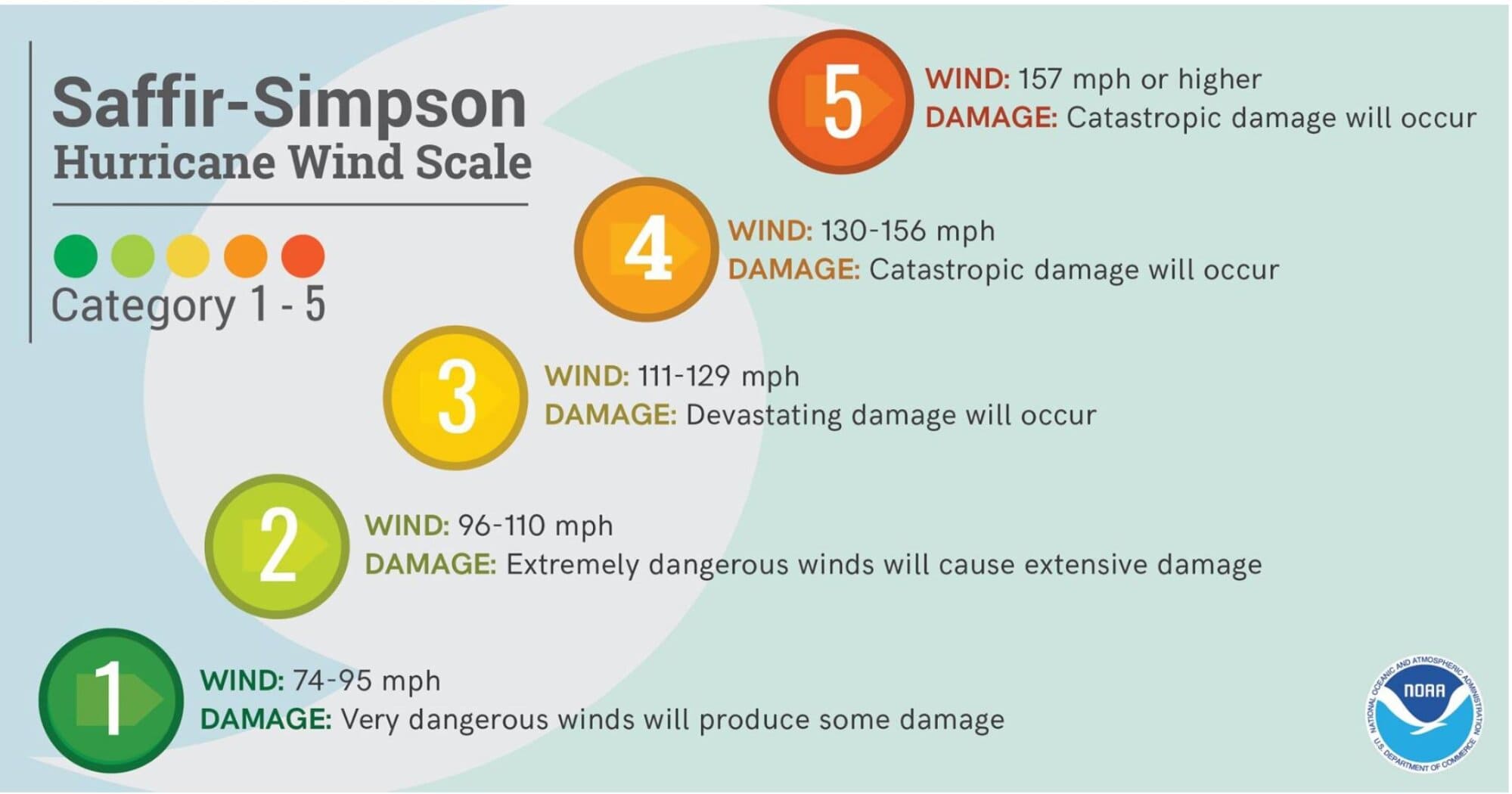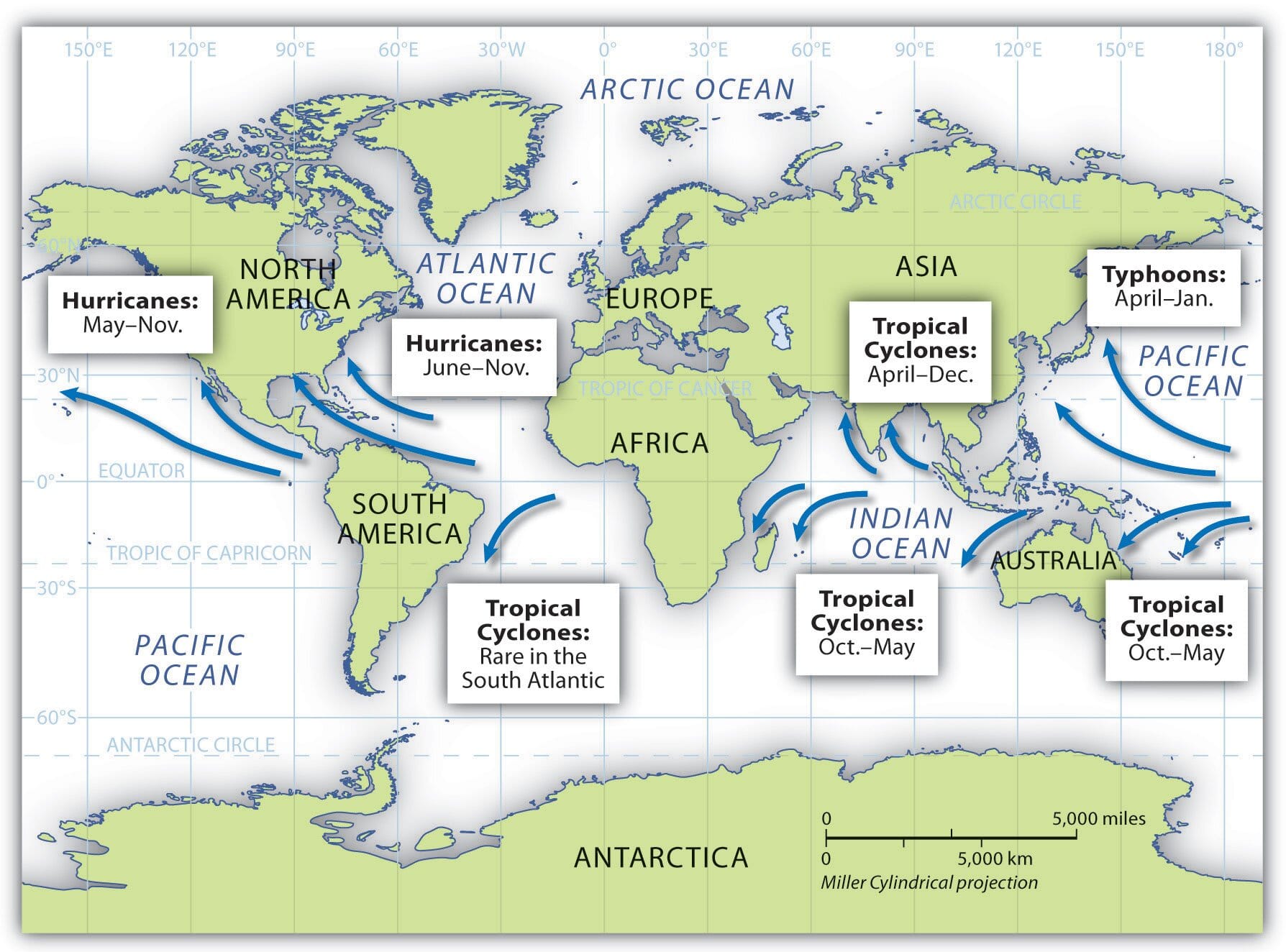Geography
Hurricane Laura
- 28 Aug 2020
- 4 min read
Why in News
Hurricane Laura, has made landfall in southwestern Louisiana (South Central United States) with wind speeds reaching up to 250 km (about 150 miles) an hour.
Key Points
- Description: Hurricane Laura is a Category 4 storm.
- A Category 4 storm has wind speeds between 130-156 mph and can uproot trees and bring down power lines.
- The Saffir-Simpson Hurricane Wind Scale: Hurricanes are categorized on the Saffir-Simpson Hurricane Wind Scale, which rates them on a scale of 1 to 5 based on wind speed.
- Hurricanes that reach category three or higher are classified as major hurricanes.
- It is because of their potential to cause devastating damage to property and life.
- Hurricanes that reach category three or higher are classified as major hurricanes.
- Timings of Hurricane:
- Two seasons of hurricanes are observed in the Atlantic and Pacific regions:
- The Atlantic hurricane season runs from 1st June to 30th November .
- The Eastern Pacific hurricane season runs from 15th May to 30th November.
- Hurricane Hanna: It was the last storm which made landfall on the Texan coast reaching wind speeds of up to 90 mph, and was listed as a Category 1 storm.
- It was the first hurricane of the 2020 Atlantic hurricane season.
- Hurricane Hanna: It was the last storm which made landfall on the Texan coast reaching wind speeds of up to 90 mph, and was listed as a Category 1 storm.
- Two seasons of hurricanes are observed in the Atlantic and Pacific regions:
- Hurricane:
- Origin: Tropical cyclones or hurricanes use warm, moist air as fuel, and therefore form over warm Equatorial water.
- Mechanism:
- Low-Pressure Creation: When the warm, moist air rises upward from the surface of the ocean, it creates an area of low air pressure below.
- When this happens, the air from the surrounding areas rushes to fill this place, eventually rising when it becomes warm and moist too.
- An eye forms in the centre. It is the calmest part of the cyclone. Before the wind reaches the centre it gets warmed up and rises upwards.
- When the warm air rises and cools off, the moisture forms clouds. This system of clouds and winds continues to grow and spin.
- This disturbance is fuelled by the ocean’s heat and the water that evaporates from its surface.
- Such storm systems rotate faster and faster.
- Storms that form towards the north of the equator rotate counterclockwise, while those that form to the south spin clockwise because of the rotation of the Earth.
- Low-Pressure Creation: When the warm, moist air rises upward from the surface of the ocean, it creates an area of low air pressure below.
Worldwide Terminology of Tropical Cyclones:
- Depending on where they occur, hurricanes may be called typhoons or cyclones. They are given many names in different regions of the world:
- Typhoons: tropical cyclones are known as Typhoons in the China Sea and Pacific Ocean.
- Hurricanes: In the West Indian islands in the Caribbean Sea and Atlantic Ocean.
- Tornados: In the Guinea lands of West Africa and southern USA.
- Willy-willies: In north-western Australia and
- Tropical Cyclones: In the Indian Ocean Region.






